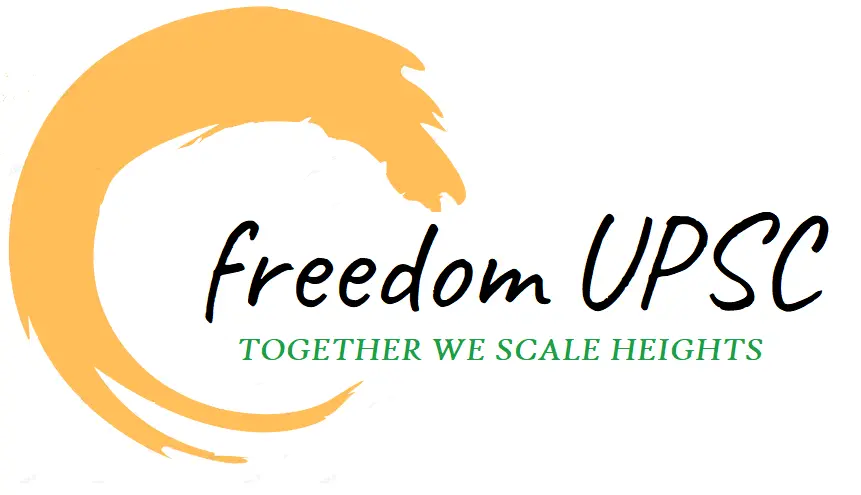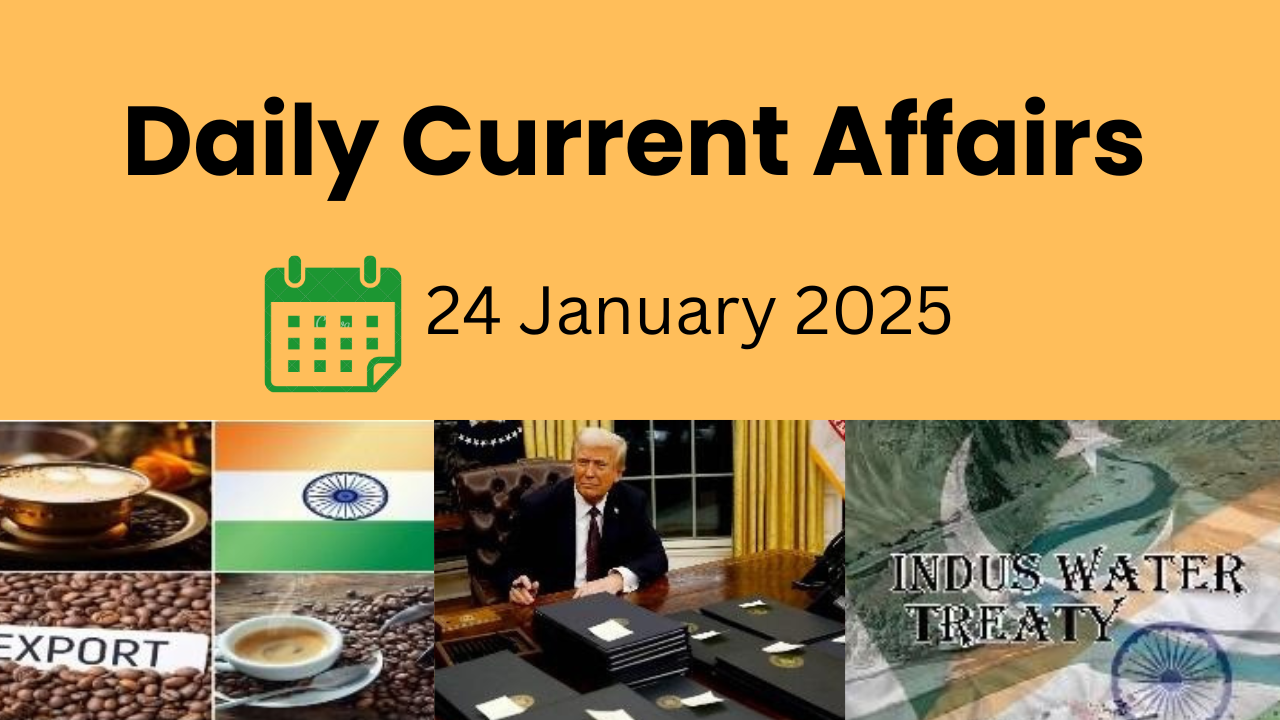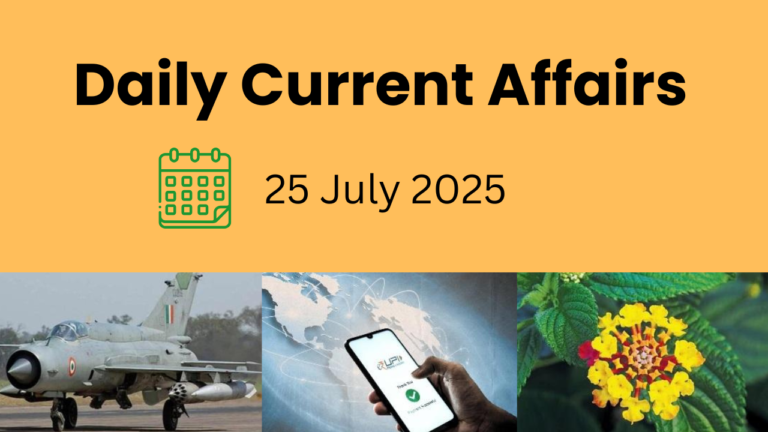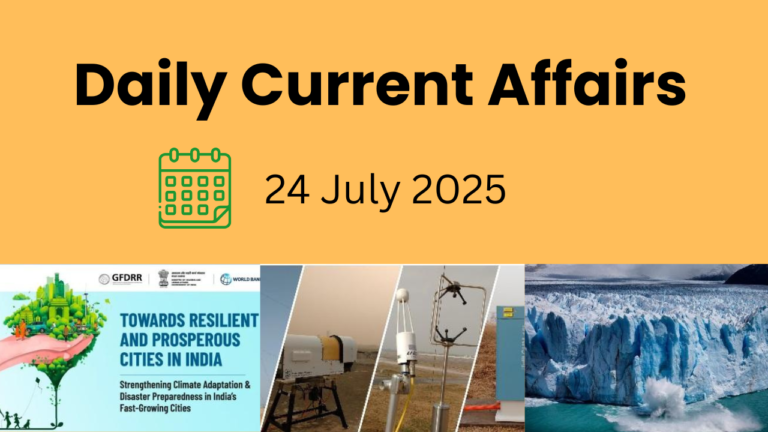1. India’s 6-Point Plan to Strengthen Economic Ties with the EU
Context: India has introduced a comprehensive 6-point plan aimed at enhancing its economic partnership with the European Union (EU). This initiative focuses on fostering trust, promoting fair trade, and driving technological and sustainable growth.
The 6-Point Plan:
1. Trusted Partnership:
- Foster stronger economic ties between India and the EU, benefiting a combined population of 2 billion people.
- Build a foundation of mutual trust to ensure sustained cooperation and growth.
2. Fair Trade Agenda:
- Work towards a mutually beneficial Free Trade Agreement (FTA) to eliminate tariff and non-tariff barriers.
- Prioritize the inclusion of small enterprises, farmers, and fishermen to ensure equitable trade practices.
3. High-Quality Production:
- Adopt EU best practices to harmonize manufacturing standards under the vision of “zero defect, zero effect”.
- Focus on producing high-quality, sustainable goods for global markets.
4. Technological Collaboration:
- Jointly develop cutting-edge technologies and secure critical raw material supply chains.
- Promote fair technology sharing to enhance resilience against non-market economies.
5. Sustainable Development:
- Align trade and economic policies with Sustainable Development Goals (SDGs), adhering to the principle of common but differentiated responsibility.
- Collaborate in areas like renewable energy, green technologies, and environmental protection.
6. Mutual Growth:
- Leverage India’s talent pool as a “living bridge” to drive shared innovation and prosperity.
- Enhance cultural and economic exchanges for mutual benefit.
India-EU Relations: An Overview:
Political Cooperation:
- Historic ties: India-EU relations date back to the 1960s, strengthened by the 1994 Cooperation Agreement.
- Milestones:
- 2000: First India-EU Summit.
- 2004: Upgraded to a Strategic Partnership at the 5th Summit in The Hague.
Economic Cooperation:
- Bilateral trade: Reached USD 137.41 billion (2023-24), with the EU as India’s largest trading partner in goods.
- Services trade: Valued at USD 51.45 billion in 2023.
Sectoral Collaborations:
- Water Management: The India-EU Water Partnership (IEWP) (2016) focuses on sustainable water frameworks.
- Nuclear Energy: Agreement signed in 2020 for R&D on the peaceful use of nuclear energy.
- Trade and Technology Council (TTC): Launched in 2023 to advance collaboration on trade, technology, and security.
Challenges in India-EU Collaboration:
- Legacy Trade Issues:
- Persistent disputes over tariffs, non-tariff barriers, and standards harmonization.
- Technology Transfer:
- Misalignment in intellectual property rights (IPR) and challenges in equitable technology sharing.
- Critical Raw Materials:
- Geopolitical tensions and competition for resources hinder smooth cooperation in securing vital materials.
Way Forward:
- Accelerate FTA Negotiations:
- Address key issues like market access, trade facilitation, and dispute resolution mechanisms.
- Enhanced R&D Partnerships:
- Establish joint research centers and innovation hubs to drive technological progress.
- Sustainability Focus:
- Invest in green technologies and renewable energy to achieve long-term economic and environmental benefits.
Conclusion:
India’s 6-point plan offers a clear and strategic framework for deepening its partnership with the EU. By addressing core challenges such as trade barriers, technology sharing, and sustainability, this collaboration can unlock immense potential for global economic stability and resilience. Together, India and the EU have the capacity to shape a more equitable, sustainable, and prosperous future.
2. India’s Strategic Response to Trump’s Presidency
Context: India’s External Affairs Minister, S. Jaishankar, has embarked on a crucial mission to Washington, prioritizing bilateral ties, regional security, and economic collaboration as key pillars of India-U.S. relations during the Trump presidency.
Key Priorities for Jaishankar’s Washington Visit:
1. Early Modi-Trump Meeting:
- Strengthen the personal rapport between Prime Minister Narendra Modi and President Donald Trump, established during Trump’s first term.
- Focus on defense cooperation, energy security, and counter-terrorism to lay the groundwork for high-level bilateral engagements in the coming years.
2. Quad Summit and Regional Security:
- Reinforce the Quad alliance (India, U.S., Japan, and Australia) to ensure a free and open Indo-Pacific, aligning with India’s Act East Policy.
- Promote peace, stability, and connectivity in the Indo-Pacific region to counterbalance China’s growing influence.
3. Trade and Economic Collaboration:
- Address unresolved tariff issues, such as U.S. duties on Indian steel and aluminum, and advocate for fair trade practices.
- Explore synergies in emerging technologies like artificial intelligence, semiconductors, and cybersecurity.
4. Immigration and Talent Mobility:
- Advocate for smoother visa processing and address restrictions impacting Indian professionals working in the U.S.
- Strengthen ties with the Indian-American diaspora, a vital link in the India-U.S. relationship.
Strategic Significance of the Agenda:
1. Addressing Geopolitical Shifts:
- Counter China’s assertiveness in Asia, particularly in the Indo-Pacific region, by enhancing Quad cooperation.
- Promote regional peace and connectivity through a strong maritime security framework.
2. Economic Synergy:
- Expand collaboration in emerging sectors like artificial intelligence, semiconductors, and renewable energy, leveraging India’s growing status as a global tech hub.
3. Reinforcing Shared Values:
- Reaffirm India and the U.S.’s commitment to democracy and a rules-based international order, strengthening their strategic partnership.
Challenges Ahead:
- Trade and Tariff Disputes: Persistent disagreements over tariffs and non-tariff barriers remain unresolved.
- Immigration Restrictions: Challenges such as U.S. visa caps and delays hinder the mobility of Indian professionals.
- Geopolitical Divergences: Differences in global conflict stances, like on Russia, may test bilateral cooperation.
- Technology Barriers: Restrictions on sensitive technology transfers limit potential in defense collaboration.
- Domestic Pressures: Political and economic constraints in both nations could impact policy priorities.
Way Forward:
- Streamline Trade Agreements: Focus on reducing trade barriers to maximize mutual economic benefits.
- Advance Immigration Reforms: Develop frameworks to enhance talent mobility and improve visa efficiency.
- Strengthen Quad Engagement: Expand cooperation on regional connectivity and maritime security initiatives.
- Promote Renewable Energy Ventures: Collaborate on clean and sustainable energy technologies, aligning with global climate goals.
- Frequent High-Level Dialogues: Establish regular high-level engagements to address emerging challenges and seize opportunities.
Conclusion:
Minister S. Jaishankar’s Washington agenda reflects India’s strategic vision to enhance its relationship with the U.S. by tackling critical issues like trade, immigration, and regional security. This forward-looking approach underscores India’s commitment to a robust partnership, turning challenges into opportunities and fostering a future of shared prosperity and global leadership.
3. First Executive Orders by Donald Trump (47th President of the U.S.)
Context: On his first day in office, Donald Trump, as the 47th President of the U.S., signed a series of impactful executive orders, signaling his administration’s policy priorities.
About Executive Orders:
- Definition: Official directives issued by the President to manage the federal government, enforce laws, or set significant policy initiatives.
- Scope: Can range from routine administrative tasks to major policy shifts, bypassing the need for Congressional approval.
- Usage: Often employed to achieve goals that face legislative hurdles.
Key Highlights of Trump’s Executive Orders:
1. Pardons:
- Pardoned 1,500 individuals, including:
- Participants in the January 6, 2021 Capitol riot, such as members of the Proud Boys and Oath Keepers.
2. Immigration:
- Reversed Biden-era policies, prioritizing deportation of all undocumented immigrants.
- Suspended the U.S. refugee resettlement program for four months.
- Declared a national emergency on the U.S.-Mexico border, deploying troops for immigration enforcement.
- Proposed ending birthright citizenship, anticipating legal challenges.
3. Undoing Biden Policies:
- Revoked 78 executive orders signed by Biden, including:
- COVID-19 relief measures.
- Diversity, equity, and inclusion (DEI) initiatives.
- Clean energy policies.
- Directed federal agencies to preserve records related to alleged political persecutions.
4. Diversity and Inclusion: Rescinded Biden’s executive orders promoting DEI and LGBTQ+ protections.
5. Government Efficiency:
- Created the Department of Government Efficiency (DOGE), led by Elon Musk, to streamline federal operations.
- Faced immediate legal challenges over its scope and jurisdiction.
6. Climate and Energy:
- Withdrew from the Paris Climate Agreement.
- Reversed restrictions on oil drilling in the Arctic and on federal lands, focusing on energy independence.
- Declared a national energy emergency to boost domestic oil and gas production.
7. Inflation and Economy:
- Ordered departments to implement measures to combat inflation, attributing it to Biden’s policies.
- Proposed 25% tariffs on Canada and Mexico.
- Directed agencies to assess China’s compliance with trade agreements.
8. Foreign Policy and Aid:
- Paused foreign development assistance for 90 days to ensure alignment with U.S. interests.
- Rejected the OECD global minimum corporate tax deal, citing the need for Congressional approval.
- Free Speech: Signed an order to restore freedom of speech and end federal censorship of online platforms.
- Health Policy: Withdrew from the World Health Organization (WHO), citing its handling of the COVID-19 pandemic.
Implications for U.S.-India Relations:
1. Trade Policies:
- Protectionist stance: Higher tariffs on Indian exports could strain trade relations, as the U.S. is India’s largest export market.
- WTO violations: Trump’s trade policies could lead to disputes at the World Trade Organization, complicating bilateral relations.
2. Opportunities in Manufacturing:
- Anti-China stance: India could benefit from shifting supply chains, particularly through production-linked incentives (PLIs).
- Challenges: India must implement structural reforms to maximize these opportunities.
3. Technology and Innovation:
- India’s STEM talent could gain from U.S. investments in emerging technologies such as AI and quantum computing.
- IT sector growth: Potential expansion in India’s IT services, although restrictions on H-1B visas may pose risks.
4. Immigration and Visas:
- Stricter immigration policies, including H-1B visa restrictions, could negatively impact Indian professionals.
- IT firms: May face difficulties in deploying talent to the U.S. market.
5. Energy and Climate:
- Divergence: Trump’s focus on fossil fuels contrasts with India’s renewable energy goals, complicating cooperation in climate initiatives.
Conclusion and Way Forward:Donald Trump’s presidency signals a potential reshaping of global economic dynamics, including U.S.-India relations. While challenges such as protectionist trade policies, immigration restrictions, and divergent energy priorities may arise, opportunities exist in areas like manufacturing, technology, and regional security.
4. RBI Issued Norms for Asset Reconstruction Companies (ARCs)
Context: The Reserve Bank of India (RBI) has introduced revised norms for Asset Reconstruction Companies (ARCs) to enhance transparency and efficiency in the settlement of dues with borrowers.
Key Features of the Guidelines:
1. Framework for Settlement of Dues:
- ARCs are required to adopt a Board-approved policy to govern settlement practices.
- Policies should outline transparent and consistent procedures for settling dues with borrowers.
2. Differentiated Approach Based on Loan Size:
- For dues above 1 crore:
- Approval must come after recommendations from an Independent Advisory Committee (IAC).
- The IAC should include experts in technical, financial, or legal domains to ensure impartiality.
- For dues up to 1 crore:
- Settlement proposals can be approved by officials not involved in acquiring the concerned financial asset to avoid conflicts of interest.
3. Recovery Safeguards:
- Settlements must ensure that the Net Present Value (NPV) of the settlement is not lower than the realisable value of securities.
What is an Asset Reconstruction Company (ARC)?
ARCs are specialized financial institutions that purchase non-performing assets (NPAs) from banks and financial institutions. This allows lenders to clean their balance sheets and focus on fresh credit.
Key Points about ARCs:
- Introduction: The Union Budget 2021-22 announced the establishment of ARCs to tackle India’s mounting NPA crisis.
- Regulation: ARCs are governed by the RBI under the SARFAESI Act, 2002.
- Role: They play a pivotal role in resolving stressed financial assets, enhancing the overall stability of the financial system.
Non-Performing Assets (NPAs):
- Definition: Loans or advances that have stopped generating income for the lender.
- Criteria: A loan is classified as an NPA when the borrower fails to make payments on the principal or interest for at least 90 days.
National Asset Reconstruction Company Ltd (NARCL):
- Formation: Established in 2021 as a government-backed ARC.
- Ownership:
- Majority stake held by Public Sector Banks (PSBs).
- Remaining stake held by private banks, with Canara Bank as the sponsor bank.
- Regulation: Registered under the SARFAESI Act, 2002.
- Objective: To facilitate the resolution of large-value stressed assets by acquiring and managing them effectively.
Functions of ARCs:
1. Acquisition of Bad Loans:
- ARCs purchase NPAs from banks and financial institutions at a discounted price, enabling lenders to clean up their balance sheets.
2. Resolution of Stressed Assets:
- After acquiring bad loans, ARCs employ various strategies to recover dues, including:
- Restructuring of loans.
- One-time settlements.
- Asset liquidation.
3. Securitization of Loans:
- ARCs can issue securities or bonds to investors.
- These securities are backed by the underlying NPAs, helping ARCs raise funds for further asset acquisitions.
Concluding Remarks:
- ARCs are essential components of India’s financial system, addressing the critical issue of non-performing assets (NPAs) and enhancing the health of the banking sector.
- By streamlining asset recovery and resolution, ARCs enable banks to focus on fresh credit, contributing to financial stability and economic growth.
- The revised RBI norms strengthen governance, transparency, and operational efficiency within ARCs, ensuring their pivotal role in India’s financial ecosystem remains robust.
5. India Became the 7th Largest Producer of Coffee
Context: India has emerged as the seventh-largest coffee producer globally, with coffee exports reaching $1.29 billion in the last financial year. This marks a significant increase compared to $719 million in exports during 2020-21.
Key Highlights:
Export Insights:
- Top Buyers: Italy, Belgium, and Russia are the primary importers of Indian coffee.
- Unroasted Coffee Beans: India primarily exports unroasted coffee beans; however, demand for value-added products like roasted and instant coffee is increasing.
Domestic Consumption:
- The growing popularity of café culture, rising disposable incomes, and a shift in preferences toward coffee are driving domestic consumption in India.
Coffee Production in India:
Types of Coffee Grown:
- Arabica: Known for its mild flavor and higher market value.
- Robusta: More robust and less acidic, often used in instant coffee production.
Export-Oriented Commodity:
- 65%-70% of coffee produced in India is exported, showcasing its export-oriented nature.
Regions of Cultivation:
- Traditional Areas:
- Western Ghats in Karnataka, Kerala, and Tamil Nadu account for most of India’s coffee production.
- Non-Traditional Areas:
- Andhra Pradesh, Odisha, and the North-East states are emerging coffee-growing regions.
Leading States:
- Karnataka: The top coffee-producing state in India.
- Kerala: Second-largest producer.
- Tamil Nadu: Third-largest contributor.
Climatic and Agricultural Practices:
Climatic Conditions:
- Coffee thrives in temperatures between 15°C and 24°C.
- Extreme temperatures outside this range adversely affect yield.
Unique Cultivation Practices:
- Indian coffee is cultivated under a two-tier mixed shade canopy of evergreen leguminous trees.
- Benefits of Shade Cultivation:
- Prevents soil erosion on sloping terrains.
- Enriches soil by recycling nutrients.
- Protects coffee plants from temperature fluctuations.
Coffee Board of India:
Establishment:
- Created under the Coffee Act VII of 1942, the Coffee Board operates under the Ministry of Commerce and Industry.
Structure:
- Comprises 33 members, including the Chairman and the Secretary & CEO.
Role:
- Promotes coffee production in India.
- Facilitates research, marketing, and support for coffee growers and exporters.
Global Context:
- Largest Coffee Producers:
- Brazil: Accounts for 40% of global coffee production.
- Vietnam: Second-largest producer.
- India’s recent rise to the seventh-largest producer reflects its growing presence in the global coffee industry.
Conclusion:
India’s coffee sector is experiencing robust growth, driven by rising exports and domestic consumption. With its unique cultivation methods, favorable climatic conditions, and increasing demand for value-added products, India is well-positioned to strengthen its global coffee footprint.
Further investment in value addition, branding, and sustainable practices can unlock additional opportunities for the coffee industry, ensuring continued growth and competitiveness on the global stage.
6. World Bank on Indus Water Treaty Dispute
Context: The World Bank-appointed Neutral Expert has declared their competence to resolve differences between India and Pakistan regarding hydroelectric projects on the Indus and its tributaries.
Indus Water Treaty (IWT):
Overview:
- Signed in 1960, the Indus Water Treaty governs water-sharing arrangements between India and Pakistan.
- The treaty was brokered by the World Bank.
Allocation of Rivers:
- Eastern Rivers (India): Ravi, Beas, and Sutlej allocated exclusively to India.
- Western Rivers (Pakistan):
- Indus, Jhelum, and Chenab allocated to Pakistan, with limited usage rights for India, including:
- Non-consumptive use (e.g., navigation, fisheries).
- Domestic use.
- Agricultural use.
- Hydroelectric power generation (under specific conditions).
- Indus, Jhelum, and Chenab allocated to Pakistan, with limited usage rights for India, including:
Key Features:
- Allocation of Water: Pakistan receives 80% of the Indus system’s water.
- Permanent Indus Commission (PIC): Comprising representatives from both countries to oversee treaty implementation and resolve disputes.
- Dispute Resolution Mechanism:
- Questions: Addressed by the PIC.
- Differences: Handled by a Neutral Expert.
- Disputes: Resolved by a Court of Arbitration (CoA).
- The World Bank’s role includes appointing officials for these mechanisms when requested.
Key Disputes Between India and Pakistan:
Pakistan’s Objections:
- Pakistan opposes several Indian hydroelectric projects, claiming potential violations of treaty provisions.
- Major disputes involve:
- Kishanganga Hydroelectric Project: Located on the Kishanganga River (Neelum, a tributary of Jhelum).
- Ratle Hydroelectric Project: Located on the Chenab River.
- The disagreement centers on whether the technical details of these projects adhere to treaty guidelines.
World Bank’s Role:
- The Neutral Expert’s recent declaration prevents escalation to a Court of Arbitration (CoA), as sought by Pakistan.
- India has welcomed the Neutral Expert’s involvement as a constructive step toward resolution within the framework of the treaty.
Indus River System:
Origin of the Indus River:
- The Indus River originates at Bokhar Chu in the Tibetan region, near Mansarovar Lake.
- Locally known as Singi Khamban (Lion’s Mouth).
- It enters India at Demchok in the Ladakh region.
Tributaries:
- Left Bank Tributaries: Zaskar, Suru, Soan, Jhelum, Chenab, Ravi, Beas, Sutlej, and Panjnad Rivers.
- Right Bank Tributaries: Shyok, Gilgit, Hunza, Swat, Kunnar, Kurram, Gomal, Tochi, and Kabul Rivers.
Key Hydroelectric Projects on Western Rivers:
Indus River:
- Nimmo-Bazgo (Leh).
- Stakna (Leh).
Chenab River:
- Baglihar Stage-I (Doda).
- Chenani Project (Tawi River, Udhampur).
- Dulhasti (Doda).
Jhelum River:
- Uri-I & II (Baramulla).
- Ganderbal (Srinagar).
- Upper Sindh I & II (Sindh Nallah, tributary of Jhelum).
Implications of the Dispute:
- India’s Stance: Neutral Expert’s involvement reaffirms India’s adherence to the treaty.
- Pakistan’s Concerns: Fear of water shortages due to Indian hydroelectric projects.
- Bilateral Relations: The dispute continues to strain India-Pakistan ties.
Conclusion: The Indus Water Treaty remains a vital framework for India-Pakistan water-sharing. While disputes have tested its resilience, the involvement of the World Bank and its Neutral Expert offers an opportunity for peaceful resolution. Both nations must prioritize cooperation to ensure sustainable and equitable water management in the region.




